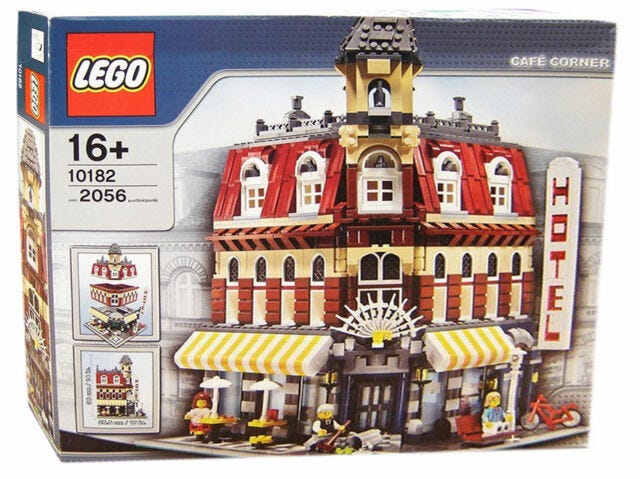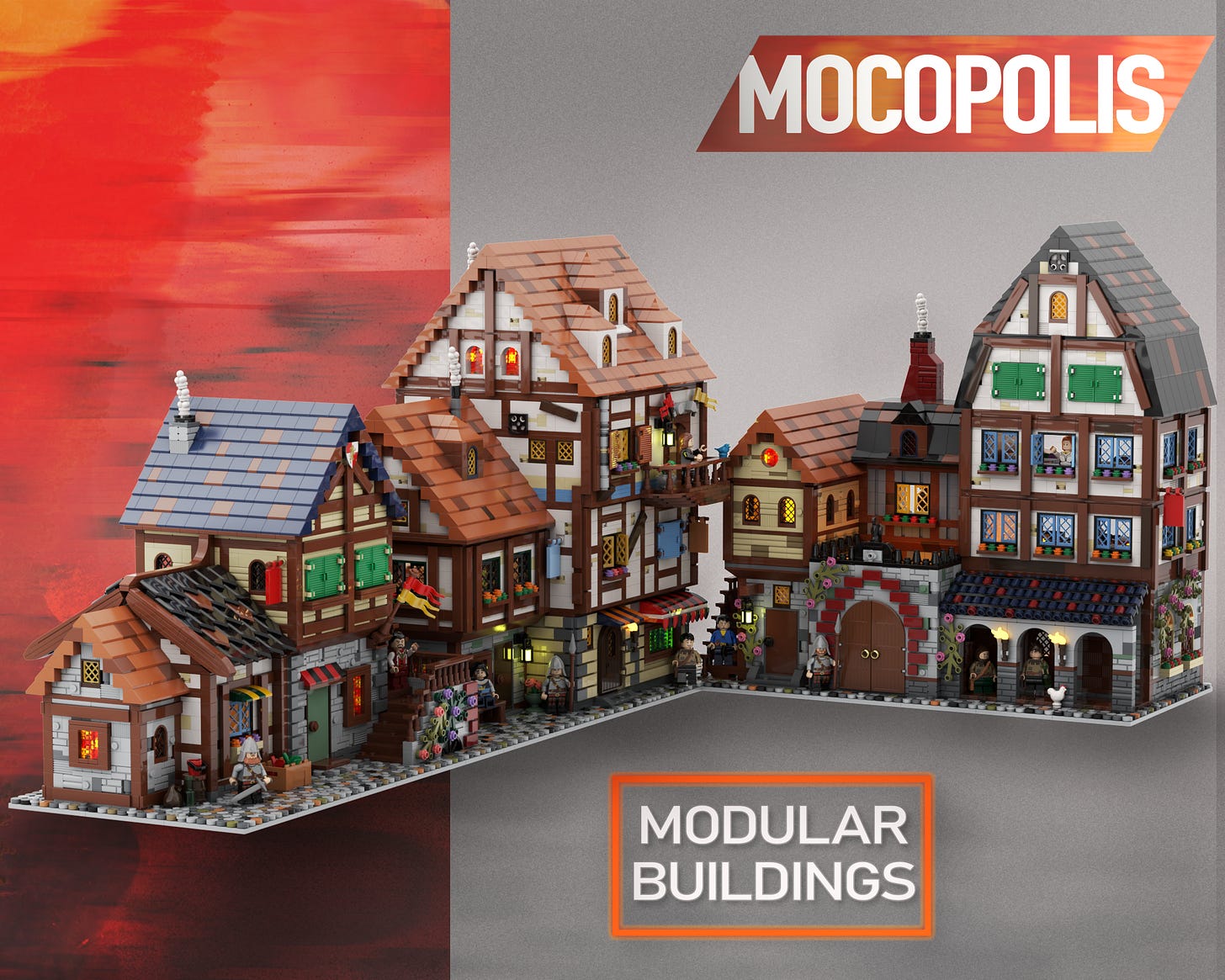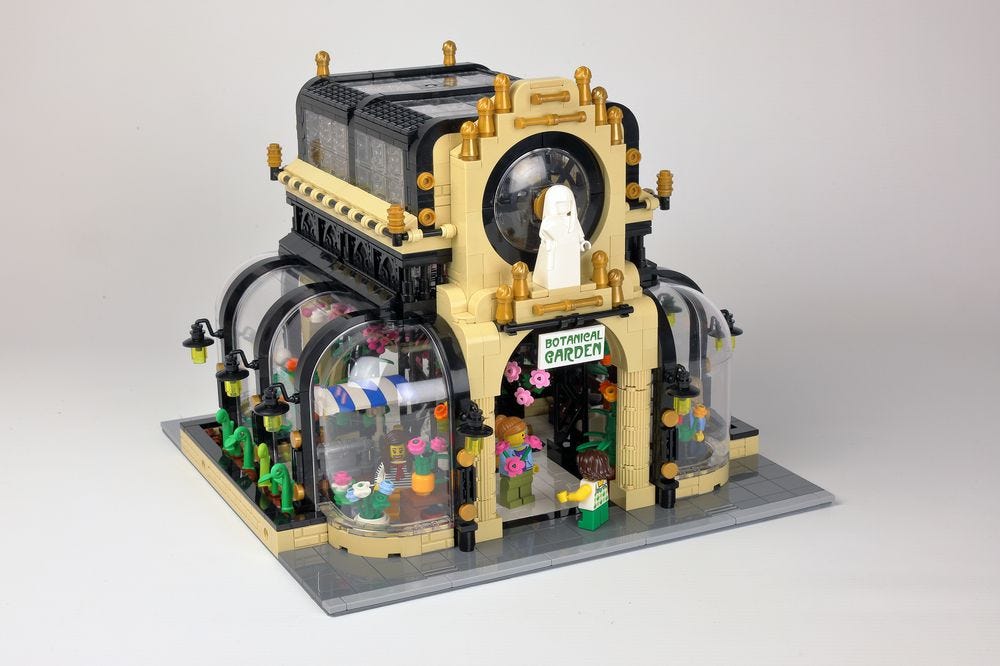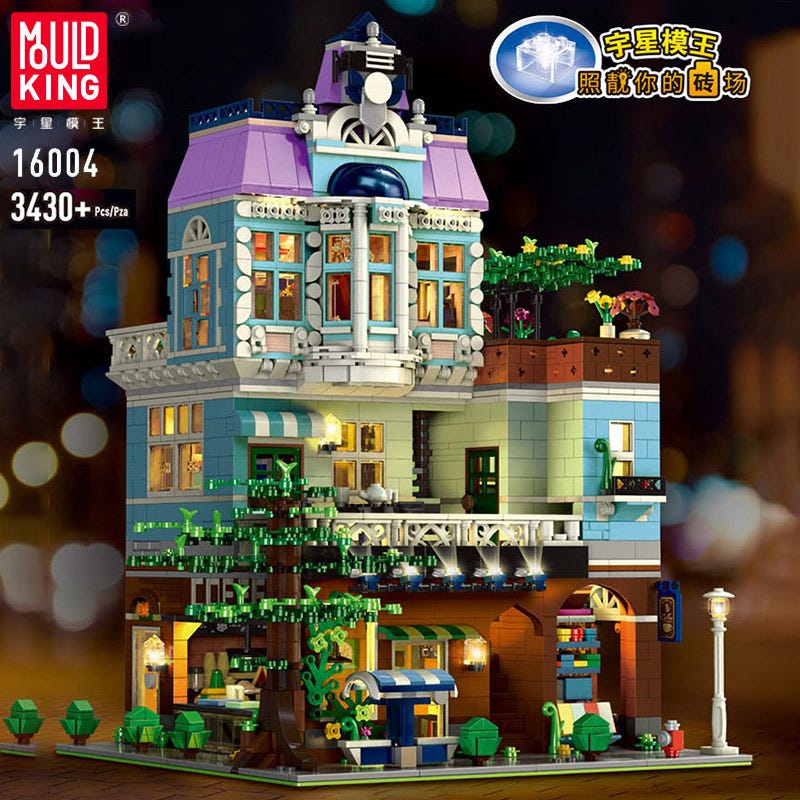Several years ago there was a knock-off Lego band called Lepin. Lepin sold copies of popular Lego building sets direct-from-China for half (or less) of the Lego price.
The sets weren’t just a “Lepin version” of the Lego Millennium Falcon or other popular Lego sets. They were 100% exact, brick-for-brick copies. Lepin stole and pirated the entire Lego design. Although Lepin sets shipped with their own instruction booklets, they were such close copies of the Lego originals that you could download the PDF Lego instructions of the real set to build your Lepin clone. I mean seriously, look at this:
Lepin grew in notoriety and in 2019 several members of the “Lepin Gang” were apprehended by Chinese authorities and sentenced to several years in prison. The Lepin crackdown was probably taken so seriously because Lego itself is actually pretty active and well-known in Mainland China, although that’s just a guess on my part. More than $30 million was seized from Lepin’s HQ, along with more than 600,000(!) completed sets – this was no tiny counterfeiting operation. It grew big enough to be a meaningful threat to Lego’s business.
I never owned a Lepin set but they were supposedly high quality enough to make the $200 Lepin Millennium Falcon an appealing alternative to people that couldn’t afford the $800 real thing. They were at least good enough to not be considered ripoffs for consumers.
Since Lepin’s shutdown 3 years ago, there has been an interesting development in the Chinese “alt-brick” toy scene: many of the Chinese brick and toy building block makers have gone legit.
Sort of.
The formally black-and-white world of cloned Lego sets has evolved into a more complicated ecosystem with several distinct shades of grey. Today we’re going to take a look at the alt-brick scene, sorted by most illegal and unethical through the most legitimate. Let’s start with the most clear-cut:
Worst: Cloned Lego sets still exist
Coming as a surprise to no one, shutting down Lepin didn’t shut down the unauthorized Lego clones. Lepin itself simply changed its name, splitting into several offshoots that continue to sell blatant 1:1 copies of Lego sets at a fraction of the price. There are “family trees” of knock-off Chinese brick brands, so anyone so inclined can find out which ones are offshoots of Lepin and which ones sprung up on their own. They change their names and logos every couple years.
As the counterfeit copies improve in quality this has caused some consumers to give The Lego Company itself a little side-eye. The bricks from the best copycats are now nearly indistinguishable in quality, and plenty of official Lego sets are already manufactured in China. So it makes Lego look “greedy” when they’re charging $300 for something that can be had for $120 from a clone-maker.
That’s a short-sighted point of view, however. Lego has to pay the license-holder. Lego has to conceptualize, design, and test the sets. Lego has to market the sets so that there is even any demand for the copycats to draft off of at all. Lego puts in all the expensive hard yards. The clone makers swoop in at the finish line to capitalize.
Under the smallest amount of scrutiny the “greedy Lego” argument essentially falls apart - at least in the context of comparing the company to the cloners. These clones are leeches on the scene, draining money and resources away from the creativity and ingenuity brick fans love about Lego.
Also Bad: Cloning retired sets
So our first slightly-less-bad shade of grey here is that many knock-off companies also reprint and sell stolen sets that Lego itself has retired, and is no longer printing.
Lego aggressively retires sets to make room for new lines and new sets. If you’re newly into Lego and interested in the Modular Building line (like me!) it’s a bit of a shock to learn you’d need to pay $2000 to get an unopened copy of Cafe Corner - the first Lego modular. So it’s understandable that many people’s introduction to the world of Lego knock-offs is when they learn a high-quality fake can be had for $90 instead.
To be clear this is still 100% immoral and illegal - these companies didn’t design the sets and have no right to be selling them.
Some argue that it’s “equally bad” to give $2000 to a reseller as it is to give money to a maker of a knock-off. Not the worst point ever made. Or that Lego itself is somewhat predatory for its policy of aggressive retirements. But again this argument doesn’t hold up under scrutiny.
For one, every fake sold reduces the demand for Lego to “unretire” and reprint a set. Lego almost never puts things back into print, but… it could. And it is within the company’s rights to do so. Additionally, Lego sets appreciating steadily in value once retired is part of the appeal of the hobby for many. Someone selling a retired Lego set from 2017 for 2x its original price is different than the predatory scalpers flipping PS5s for $900 the moment after they buy them. A Lego set steadily appreciating in value helps some consumers justify buying them when they’re new, so even if a clone-maker knocks off a set from years ago, this still has an indirect effect on the demand for new sets, too.
And finally, just to reiterate: these are sellers selling stolen work they aren’t entitled to. Not really much more reason is needed than that.
Also Bad: Cloned MOCs and rejected Lego Ideas sets
A Lego MOC is a fan-made design (it stands for My Own Creation), either created from scratch using random bricks, or by remixing bricks from one or more officially-released Lego sets.
As Chinese alt-brick makers shifted away from blatant Lego clones in the wake of the Lepin arrests, they began releasing their own “original” designs for buildings, vehicles, characters, and more.
There was just one problem: many of these designs were just stolen from community MOC-sharing forums like Rebrickable. Rather than steal Lego’s designs, knock-off makers could just quickly manufacture, box up, and sell the most popular community-made Lego designs instead.
The Lego Ideas website has been another popular source of theft. Users submit designs, and if a design gets 10,000 votes, the Lego Company officially puts it into consideration to be made into a real Lego set. Central Perk from Friends and lots of other attention-getting Lego sets in recent years started from an Ideas submission, including the entire Lego Minecraft line.
Knock-off makers sometimes take popular Ideas sets and sell them themselves before The Lego Company even gets a chance to evaluate them or consider them as candidates to bring to market, which feels pretty bad.
They also sometimes manufacture and sell Lego Ideas submissions that The Lego Group rejected, which feels less bad, but is still problematic given the whole “we just stole this idea and didn’t do any of the design work ourselves” thing. The Lego company rejects 90% or more of Ideas submissions, and it’s not always because the idea is bad. Often Lego is unable to get the official rights. Brick makers that already aren’t following the rules don’t have these barriers.
May actually be kind-of OK, actually?: Licensed MOCs and Original Designs
It’s taken us a while to get here, but we’re finally at the section I wrote this entire newsletter to explore. Many Lego counterfeit manufacturers are now either hiring their own in-house designers to create original brick sets for them, or actually licensing popular MOCs from the community and paying them for the right to release them commercially!
A great example is the Botanical Garden from Brickpolis. This started life as a popular original, fan-made MOC. Chinese alt-brick company Mould King actually reached out to Brickpolis and paid to secure the rights to “officially” release the set! Ironically, other less reputable brick makers are also selling their own identical - but “unauthorized” - version of the Botanical Garden. So Mould King, formally (and sometimes still) a clone-maker has itself been ripped off by one of its competitors.
At this point, when you have a company like Mould King using their own Lego-quality bricks, releasing wholly original sets, or paying third party designers a fee to license and sell their set designs, you basically have a full-on, more affordable competitor to Lego. These companies can compete with Lego on price, or find their own niche for the types of sets they offer.
It’s exciting. I bought a Mould King “Cafe” modular building recently. I paid $110 including shipping. It shipped direct from China but only took about 10 days to arrive. It is built from 3400 pieces, and comes with a battery-powered lighting kit. A similarly-sized Lego-made set would probably retail for about $240 and not include lighting. I haven’t put it together yet (I have a backlog) but I’ll report back when I have.
I see this outcome as the best possible “endgame” for consumers when it comes to all these Lego clone makers. Better quality bricks, original products, better pricing, and hopefully continuing to deepen under-served niche interests. I am growing to love modular brick buildings, but Lego releases just one set per year. After searching around, I now have 40 (!!) modular building sets on my wishlist from alt-brick makers. There is an opportunity for these brands to also serve other niche segments that want space scenes, medieval buildings, who knows what. It’s also an opportunity for amateur set designers to get paid for their work.
Some alt-brick brands are also legally acquiring IP rights. Alt-brick maker Keeppley bought the rights to create “official” Evangelion and Doraemon sets.
Unfortunately even here, in a category where companies like Mould King are serving as more “legitimate” competition to Lego, things are not entirely clear-cut.
Western alt-brick buyers like me don’t always know the provenance of the alt-brick sets we’re buying. I looked around and I don’t think the Mould King Cafe design is stolen from a fan source, but it’s hard to be sure. Additionally, even if this Mould King set is on the up-and-up, the company (and very nearly all of the others) still engage in making Lego copies. There are two sides to Mould King: the company paying creators and releasing increasingly high quality original sets, and the company releasing cloned, unauthorized Lego copies. So if you buy one of their “legit” sets you’re still financially supporting a company that actively engages in the harmful cloning outlined earlier.
Lastly, we’re so used to these companies blatantly stealing Star Wars designs that when they go legit and release an original we applaud them - myself included. But the truth is even these “originals” are probably skirting much closer to Lego than a US-based brick startup could get away with. Take a look at this page of instructions from a Mould King set alongside a page of official Lego instructions, for example:
When incredibly blatant wholesale theft was the name of the game for so many years, it makes it easy to forget that “casual” copying like this is also not OK, if these companies hope to continue legitimizing their business. Lego puts in the hard yards establishing a unified design language and system that these alt-brick brands are still lifting wholesale even with their originals.
It’s worth pointing out that it is legal to make Lego-compatible bricks. As long as they don’t have the Lego logo on them they can have the exact same dimensions and full compatibility with “real” Lego. But Lego Minifigs and specific new Lego parts the company invents can’t be copied.
Bottom line? It seems like the several Chinese alt-brick makers are still midway on their journey to full legitimacy. Some will likely fully turn the corner and eventually offer high-quality, Lego-like sets from their own original designers or offer a legitimate pathway to commercial release for amateur designs. They still have farther to go when it comes to establishing their own identities, ideas, and position within the market. Others will likely unfortunately be unable to walk away from biting off The Lego Company’s original work.
Everyone has to decide for themselves where their “line” is. The temptation to buy a high-quality alt. version of a long-retired Lego set or a rejected Lego Ideas set is real. For me, I’ll stick with original designs. Look for more on them in a future newsletter.











years ago my son mentioned lepin and we were able to get the Porsche 911 technic knockoff for like 1/3 the price...and it was very very good.
After spending a ridiculous amount of money on true lego brand sets (Including all of they're very expensive UCS sets, and even an $800 simpson house!) I tried a mould king set. I have since assembled about 25 of their sets. Probably wont buy another true Lego set again. While the pieces are almost perfect copies (minus the lego emblem stamped on the top of studs) they don't always fit just right.
Now, that being said, the value and challenge of MKs models vs the super high cost and easy assembly of Lego, kind of a no brainer!
(On a funny note, I call em "Chaddys non-Lego legos (R)") lol